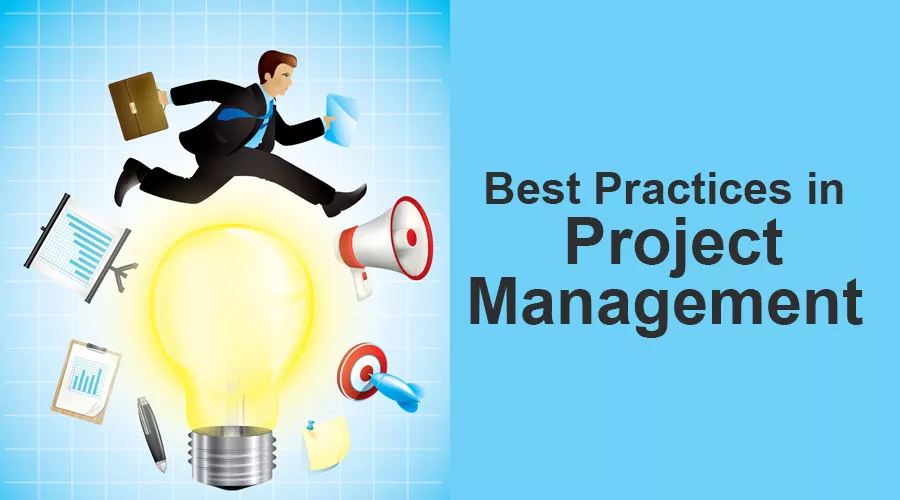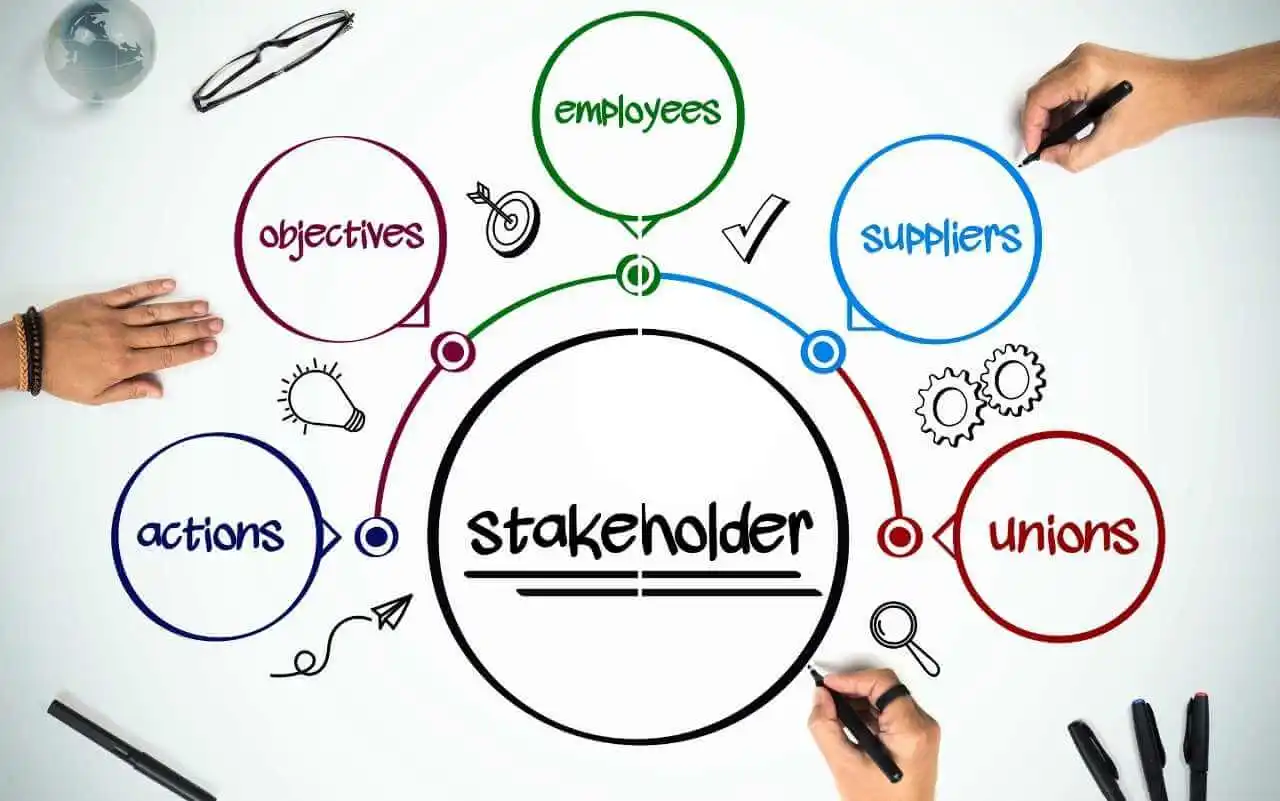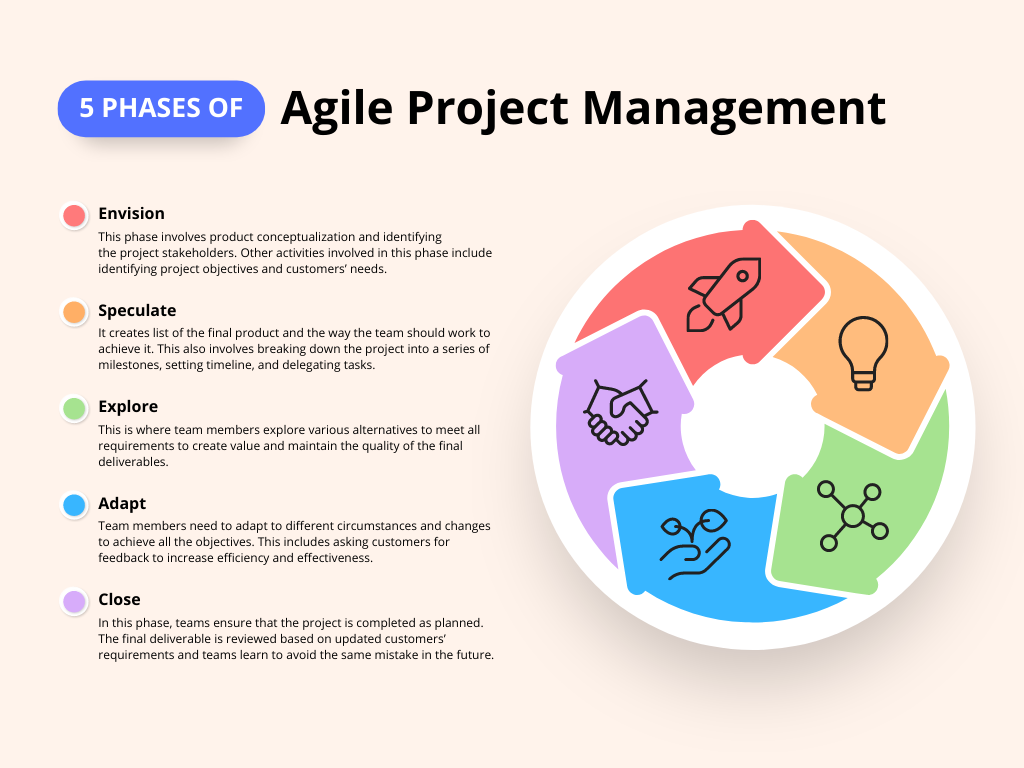
To ensure that they properly execute and complete projects within the given time frame and the specified budget, project managers must observe industry best practices. What are some of these best practices and how can they advance your success rate as a project manager? In this article, we have outlined 25 project management best practices you need to follow in the course of your work to enable you to attain success.
25 Project Management Best Practices to Follow
Consider the following project management best practices that you should follow to get your workflow smooth and result-bound –
1. State clear objectives and goals to be achieved
The reason why it is important to state and define clear objectives and goals is that without doing so, it becomes difficult to ascertain where the project is headed, how and what decisions should be made, and what the measurement for success is.
A clear project objective would provide an understanding that is shared between the members of the team and stakeholders regarding the accomplishments to be obtained. A clear objective serves as a guide that helps the team members to remain focused throughout the project. It also facilitates effective communication between the team as they gather to discuss updates and challenges.
So what are the criteria involved in stating clear objectives and goals? Make sure your objectives are specific, measurable, achievable, relevant, time-bound, or SMART for short. This will make your objectives seem realistic and it will inspire the team to be motivated to achieve success.
2. Create a well-detailed plan that specifies tasks, milestones, timelines, etc.
This involves breaking the project into smaller tasks, defining timelines, and setting milestones to guide the activities of all team members. A well-detailed project plan provides a guideline for the organizing and execution of project tasks in a way that everyone involved knows their role and responsibility.
A well-detailed project plan helps in three ways. First, it ensures that the right people and the right materials are available in their time of need. Second, it identifies areas where delays will occur therefore allowing risk management policies to be implemented. Lastly, it helps to monitor the progress, providing a basis to evaluate performance when needed.
A good plan enhances the coordination and transparency between team members. So the plan must be regularly updated to help adapt to new changes as the project progresses.
3. Establish a project scope and make sure all the stakeholders are aligned with it
This practice helps prevent scope creep and ensures that all stakeholders have a shared understanding of what is included and excluded from the project. By clearly defining the project scope, project managers can set realistic expectations, allocate resources effectively, and manage project risks.
It also enables better communication and collaboration among team members and stakeholders. When all stakeholders are aligned on the project scope, it reduces misunderstandings, conflicts, and rework, leading to improved project efficiency and success.
4. Identify important key stakeholders and engage them in the course of the project
Stakeholders are individuals or a group of individuals that have an ‘interest’ in the project. So it is important that throughout the project, you should engage them to ensure their needs, perceptions, and expectations are considered.
As a project manager, you should carry out an investigative analysis to find out who the stakeholders interested in the project are. You should engage them in the planning, decision-making, and communication process of the project, to understand their requirements and execute to their satisfaction.
Stakeholders who feel valued are more likely to contribute their resources to enhance their chances of success. Involving them also promotes transparency and communication and helps to identify areas of risk early enough.
5. Create a plan to communicate to keep all members informed
Create a structured approach to foster effective and timely communication among all members involved. A good communication plan identifies the key stakeholders, determines the methods of communication through the proper channels and the type of information to be shared. This helps a team to establish a transparent and structured communication flow and thereby enhancing the spirit of cooperation and alignment during the project.
6. Assign roles to project members that will depend on their skills and area of expertise
Assigning roles and responsibilities to project members depending on their skill and expertise is important as it ensures that capable hands are in charge of executing a task effectively. It also helps to prevent confusion and duplication of efforts, promote coordination and a sense of inclusion, as well as encourage engagement and accountability among team members.
You must regularly review and adjust these roles to help adapt to changes and maintain an aligned team throughout the project.
7. Utilize an effective project management tool to assign tasks, manage documents, track project progress, etc.
Project management tools enable the team to track project progress, assign tasks to team members, and manage project-related documents in a centralized and accessible manner. By using a collaborative tool, project managers and team members can streamline communication, enhance transparency, and facilitate collaboration throughout the project.
Using appropriate tools is best practice as it promotes efficient task management, simplifies document sharing, and provides real-time visibility into project status, fostering effective project execution.
8. Divide the project into smaller tasks and set deadlines that are not impossible to meet
This allows for better organization, focus, and control over the project’s execution. Setting impossible deadlines for these tasks ensures that they can be accomplished within a reasonable timeframe.
By breaking down the project and setting realistic deadlines, project managers can enhance productivity, manage resources effectively, and maintain motivation and momentum throughout the project. It enables a systematic approach to project execution and helps in tracking progress against established milestones.
9. Regularly monitor the progress rate against the plan
This involves consistently assessing and evaluating the actual progress of the project compared to the planned objectives, tasks, timelines, and milestones. This practice helps identify any deviations, risks, or delays early on, allowing for adjustments and corrections.
When project managers regularly monitor project progress, they can maintain control, make informed decisions, and ensure that the project stays on track toward successful completion.
10. Conduct regular meetings to discuss status updates, challenges faced, and next steps

These meetings provide a platform for the project team to discuss and share status updates, challenges, and next steps. Project meetings facilitate the exchange of information, problem-solving, and decision-making, allowing for the timely resolution of issues and proactive planning for upcoming tasks. They further promote transparency, accountability, and overall project progress.
11. Introduce and utilize a management process to handle scope changes
Establishing a change management process would help project teams ensure that changes are properly reviewed, approved, and integrated into the project. This practice helps prevent scope creep, maintains project focus, and minimizes disruptions to timelines and resources.
A well-defined change management process is part of a project management strategy that enables project teams to adapt to evolving requirements while maintaining project stability and achieving project objectives.
12. Identify risks through risk assessment and strategies to deal with these risks
Project managers and their teams can develop contingency plans and allocate resources appropriately when they identify risks early on. They can also take proactive measures to address potential obstacles.
Proactive risk management increases project resilience, helps maintain project timelines, and reduces the likelihood of costly disruptions. It ensures that risks are actively monitored and managed throughout the project lifecycle to enhance overall project performance and success.
13. Create a collaborative team environment that will help ease communication between teams

Besides building the right project team, promoting collaboration among team members is vital. When they boost collaboration, project managers can harness the collective knowledge, skills, and creativity of the team.
An inclusive environment ensures that all team members are valued, respected, and have equal opportunities to contribute their ideas and expertise. This enhances team morale, engagement, and productivity, leading to better project outcomes.
14. Create a conflict resolution process and make sure issues are resolved quickly
The conflict resolution process helps in identifying, managing, and resolving conflicts in a timely and constructive manner. By promptly addressing conflicts, project managers can prevent them from escalating and negatively impacting the project’s progress. This practice promotes effective communication, collaboration, and teamwork among team members.
Having a well-defined conflict resolution process in place ensures that conflicts are dealt with fairly, and objectively, and find mutually beneficial solutions. It also fosters a positive project environment, enhances team relationships, and contributes to overall project success.
15. Monitor the costs and ensure their control to stay within the budget
This practice, alongside cost-benefit analysis, helps maintain financial discipline, optimize resource allocation, and prevent unnecessary spending. It includes regular cost tracking, analysis of expenditures, and comparison against the budgeted amounts.
Following this practice enables project managers to make informed decisions, prioritize resources effectively, and ensure that the project remains financially viable. It contributes to the project’s financial success and overall budget management.
16. Carry out frequent quality assurance checks to ensure high standards are maintained throughout the project
Quality assurance checks help identify and address any deviations, errors, or deficiencies in the project. When project managers monitor and maintain high standards throughout the project, they can ensure customer satisfaction, minimize rework, and enhance overall project quality.
Regular quality assurance checks involve thorough inspections, testing, and validation activities. They enable proactive identification and resolution of quality issues, ensuring that the project delivers the desired level of excellence and meets stakeholders’ expectations.
17. Conduct retrospectives to encourage learning and improvement
During retrospectives, project teams reflect on the project’s successes, challenges, and lessons learned. These discussions provide valuable insights and feedback that can be used to enhance future projects.
Project managers use retrospectives to foster a culture of learning, collaboration, and innovation within the team. They enable the team to identify what went well, what could have been done differently, and actionable recommendations for future projects. Overall, conducting project retrospectives helps drive continuous improvement, increase project effectiveness, and achieve better outcomes.
18. Document the lessons and experience to be applied in future projects
Documenting involves capturing insights, experiences, and best practices gathered from completed projects. With documentation, project teams create a repository of knowledge that can be referenced and utilized in future projects.
Applying lessons learned allows for the avoidance of past mistakes, replication of successful strategies, and continuous improvement. And by embracing lessons learned, project managers and teams can enhance project outcomes, drive innovation, and increase the overall success rate of future projects.
19. Create a resource management procedure to ensure the right tasks are assigned to the right people
A resource management plan ensures that the project team has the necessary human resources to execute project tasks effectively. It would include assessing resource requirements, identifying skill gaps, and planning for resource acquisition and development.
By implementing a resource management plan, project managers can optimize resource allocation, prevent bottlenecks, and minimize resource constraints. This practice ensures that the project team has the right mix of talents and capabilities, leading to improved project performance, productivity, and ultimately, project success.
20. Monitor project dependencies and ensure they do not cause delays

Monitoring project dependencies involves identifying and tracking the relationships between different project tasks, activities, and deliverables. This ensures that all necessary prerequisites are met before proceeding with dependent tasks.
This practice helps prevent bottlenecks and delays by proactively addressing potential issues and managing the flow of work. It facilitates smoother project execution, enhances coordination, and reduces the risk of delays and inefficiencies caused by unresolved dependencies.
21. Practice time management techniques to improve productivity
As part of this best practice, project managers clear goals, break down tasks, and create realistic schedules. Time management also involves identifying and addressing time-wasting activities or distractions.
Effective time management allows project managers to focus on high-priority tasks, allocate resources wisely, and meet project deadlines. It improves efficiency, minimizes procrastination, and enhances overall project productivity. By practicing effective time management techniques, project managers can maximize their own and their team’s productivity, leading to successful project outcomes.
22. Maintain a concise documentation system
A clear and transparent documentation system promotes effective communication, collaboration, and knowledge sharing among project team members. It also helps maintain project continuity, enables efficient decision-making, and facilitates project audits or reviews.
By maintaining a transparent project documentation system, project managers can enhance accountability, mitigate risks, and ensure that project information is accurately documented and preserved for future reference.
23. Review and update risk mitigation strategies
Project managers can stay ahead of potential issues and take timely actions to minimize their impact with effective risk mitigation strategies. This practice allows for the identification of emerging risks that may arise during the project’s lifecycle.
Continuously updating mitigation strategies enable project teams to effectively address and manage risks, ensuring project success and minimizing the likelihood of negative impacts.
24. Incorporate a control process for the assessment and approval of modifications
This process ensures that changes are thoroughly evaluated, and their impact on the project is properly understood before implementation. Implementing a change control process allows project managers to maintain control over project scope and prevent scope creep. It also enables informed decision-making, provides a mechanism for evaluating change requests, and ensures that changes align with project objectives and constraints.
25. Encourage team members to be accountable and engage in their respective tasks with total concentration
To do this, project managers would need set clear expectations, establish performance metrics, and encourage individual and collective accountability for project outcomes. By fostering accountability, project managers promote a sense of ownership, motivation, and commitment among team members. This practice also encourages a culture of continuous improvement, as team members strive to deliver high-quality work and meet or exceed expectations.
Wrapping Up
While reading up and improving your project management practices, do well to remember that best practices can vary. These variations are based on the type and nature of the project, industry, and organizational context. Thus, it is wise to adapt these practices to the project requirements. Follow these project management practices outlined in this article, and you will find yourself on the path to becoming a well-seasoned project manager.







